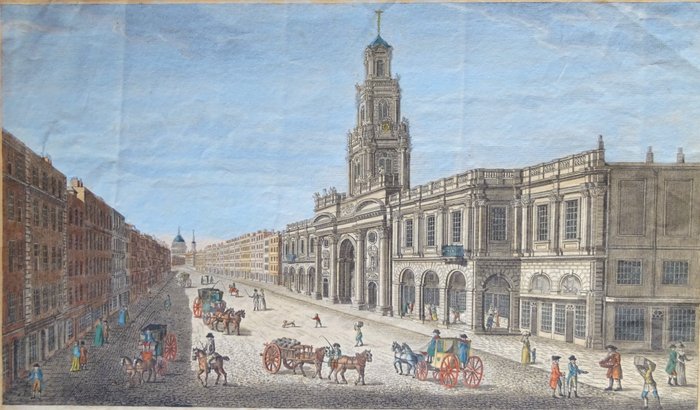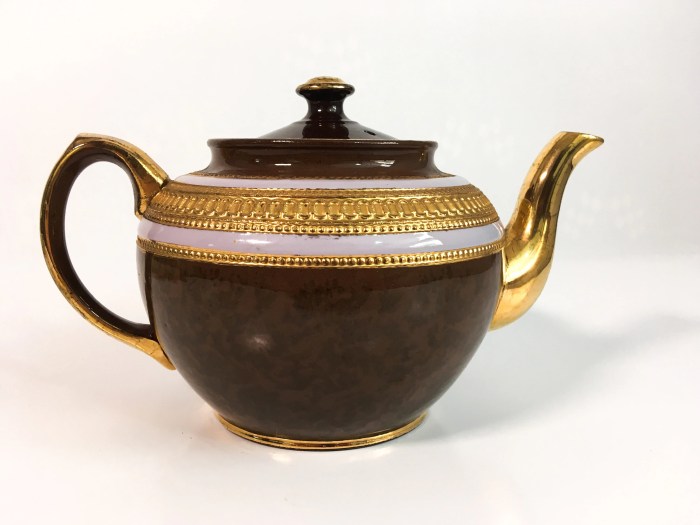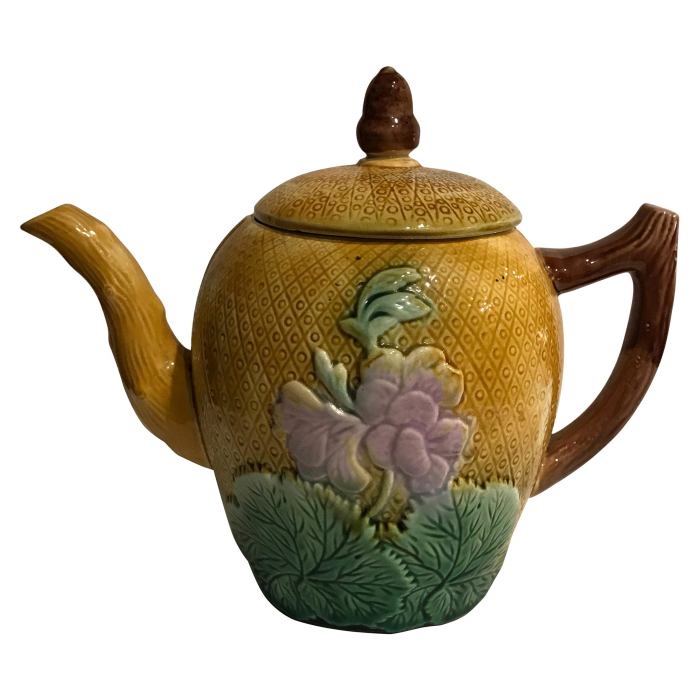Teapot made in england between 1766 and 1770 – Unveiling the rich history of teapot making in England, this article delves into the period between 1766 and 1770, showcasing the exquisite designs, skilled craftsmanship, and cultural significance of these treasured objects. As we journey through this era, we will uncover the intricate interplay between art, industry, and societal customs that shaped the creation and appreciation of these remarkable teapots.
During this transformative period, England stood at the forefront of the Industrial Revolution, which brought about advancements in pottery production. Tea drinking had become an integral part of English society, fueling a demand for stylish and functional teapots. This confluence of factors created a fertile ground for innovation and artistry, giving rise to a golden age of teapot making.
Historical Context
The years between 1766 and 1770 witnessed significant political and economic shifts in England. The country was in the midst of the Industrial Revolution, which brought about technological advancements that influenced pottery production. Tea drinking had become an integral part of English society, contributing to the demand for teapots.
Influence of the Industrial Revolution
The Industrial Revolution introduced new methods and machinery into the pottery industry. Improved firing techniques and the use of steam engines increased production efficiency. Potteries began to specialize in different aspects of production, such as shaping, glazing, and decoration.
Role of Tea Drinking
Tea drinking had become a popular social activity in England by the 1760s. Teapots were essential for brewing and serving tea, and their design and ornamentation reflected the importance of tea in society.
Design and Craftsmanship

Teapots made in England between 1766 and 1770 exhibited distinct design elements and decorative motifs. Common shapes included ovoid, pear-shaped, and globular bodies with domed lids.
Design Elements
- Ovoid bodies with curved sides
- Pear-shaped bodies with a wider bottom
- Globular bodies with a rounded shape
- Domed lids with decorative finials
- Curved spouts
- Looped handles
Materials and Techniques
Teapots were primarily made of earthenware, which was a type of ceramic fired at a lower temperature than porcelain. Creamware, a type of earthenware with a light-colored body, was also commonly used. Teapots were often decorated with hand-painted designs, transfer printing, or molded relief.
Craftsmanship
The craftsmanship of teapots varied depending on the manufacturer. Some teapots were finely crafted with intricate designs and high-quality materials, while others were more utilitarian.
Makers and Manufacturers

Several prominent makers and manufacturers produced teapots in England between 1766 and 1770. These included:
Josiah Wedgwood
Josiah Wedgwood was a renowned potter who established the Wedgwood pottery in Staffordshire. He was known for his innovative use of creamware and his development of new glazing techniques.
Thomas Whieldon
Thomas Whieldon was a potter based in Staffordshire. He was known for his production of tortoiseshell ware, a type of earthenware with a mottled glaze that resembled tortoiseshell.
Ralph Wood
Ralph Wood was a potter who established the Wood Pottery in Staffordshire. He was known for his production of creamware and pearlware, a type of earthenware with a white body.
Market and Distribution
Teapots made in England between 1766 and 1770 were marketed and distributed both within England and beyond. Teapots were sold in a variety of shops, including pottery shops, general stores, and tea shops.
Trade Routes and Merchants
The global tea trade played a significant role in the distribution of teapots. Teapots were shipped from England to colonies in North America, the Caribbean, and Europe. Merchants played a key role in facilitating the trade of teapots.
Factors Influencing Popularity
The popularity of English teapots was influenced by several factors, including their high quality, fashionable designs, and affordability.
Cultural Significance
Teapots held cultural significance in 18th-century England. They were not only functional objects but also decorative pieces that reflected the owner’s taste and status.
Domestic Use
Teapots were essential for brewing and serving tea in domestic settings. They were often displayed prominently in homes as a symbol of hospitality and comfort.
Decorative Objects
Teapots were also valued as decorative objects. They were often placed on mantelpieces, sideboards, and other display areas.
Symbolism and Meaning
Teapots carried symbolic and meaningful associations. They were often associated with femininity, domesticity, and hospitality.
Legacy and Influence: Teapot Made In England Between 1766 And 1770

Teapots made in England between 1766 and 1770 had a lasting impact on the history of ceramics and tea culture.
Impact on Ceramics
The teapots of this period influenced the development of subsequent ceramic designs and styles. Their innovative shapes and decorative motifs were adopted by other potters.
Influence on Tea Culture
The popularity of these teapots contributed to the spread of tea drinking around the world. They became an integral part of the global tea culture.
Role in Shaping Tea Culture, Teapot made in england between 1766 and 1770
The teapots of this period played a significant role in shaping the global tea culture. Their design and craftsmanship reflected the importance of tea drinking in society.
FAQ Overview
What factors contributed to the popularity of English teapots during this period?
The Industrial Revolution brought about technological advancements in pottery production, making it possible to create teapots with greater efficiency and precision. Additionally, the growing popularity of tea drinking in England fueled a demand for stylish and functional teapots, leading to increased production and innovation.
How did the designs of English teapots reflect the cultural values of the time?
The teapots produced in England during this period often featured intricate decorative motifs and elegant shapes, reflecting the prevailing aesthetic sensibilities of the era. They were adorned with patterns inspired by nature, classical mythology, and chinoiserie, showcasing the cultural influences and artistic trends of the time.
What were the key characteristics of the materials and techniques used in the production of these teapots?
English teapots from this period were typically made of high-quality porcelain or earthenware. The porcelain teapots were known for their delicate translucency and refined appearance, while the earthenware teapots were more durable and affordable. Both types of teapots were often decorated with hand-painted designs or transfer-printed patterns.